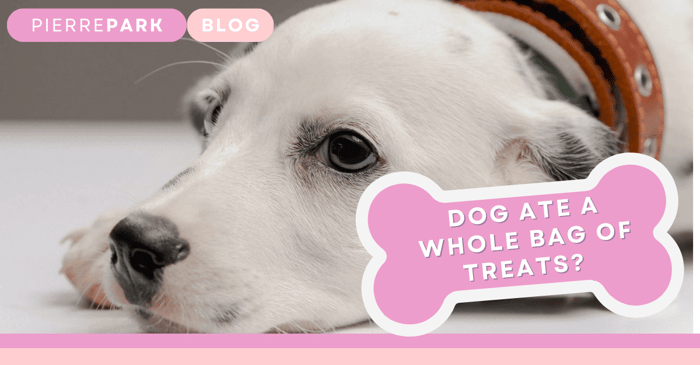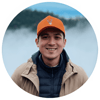Table of Contents
Vet-Approved
This article has been rigorously reviewed and validated by Dr. Annina Müller, med. vet., an accomplished veterinarian who earned her veterinary degree at the University of Bern, specializing in Small Animal Surgery. Her expertise ensures that the advice provided is both current and accurate in the field of veterinary medicine.
We've all been there. You step away for just a moment, leaving a bag of dog treats unattended, and suddenly, your pup seizes the opportunity and consumes every last treat.
If it manages to eat the whole bag, you might feel concerned, but don't worry. This guide will walk you through four easy steps to ensure your pup's well-being, even if it indulged in a week's worth of treats or more in a single sitting.
4 Steps To Follow If Your Dog Eats A Whole Bag Of Treats
Here are four steps to ensure your dog will be okay after eating a whole bag of treats.
1. Assess the Situation Before Panicking
If your dog eats an entire bag of treats, the level of concern can vary depending on the size of your dog and the amount of treats consumed. For instance, a small dog like a Chihuahua eating a large bag of treats might face serious risks like stomach dilation, which could require urgent veterinary care.
However, in many cases, consuming a lot of treats may result in mild stomach upset, such as diarrhea or vomiting. Pay close attention to how your dog reacts after eating the treats. If it shows signs of an allergic reaction, like swelling or difficulty breathing, take it to the vet immediately.
Here’s a list of common dog allergies and their symptoms to help you identify any potential issues. Remember, monitoring your dog’s response is crucial in deciding whether they need professional medical attention.
2. Let Them Rest & Monitor Symptoms Closely
After you get over the initial shock, it's important to let your dog rest.
Provide plenty of fresh water and monitor their symptoms closely. Mild vomiting or diarrhea are to be expected, but if your dog is showing any other concerning signs, get in touch with your veterinarian as soon as possible.
Over the next 12 hours, the symptoms should become less severe as your dog processes the treats through their system.
3. Offer Bland Food & Gentle Exercise
If your dog hasn't shown any symptoms like diarrhea or vomiting, they're likely constipated and need some help getting everything moving again.
If 12 hours have passed and there's no sign of them pooping or vomiting, take them for a gentle walk and offer foods like plain canned pumpkin in small amounts, which can help their stomach get moving again.
4. Return To The Normal Diet
Eventually, the symptoms will start to fade, and you can return to feeding your dog its regular diet again.
If 24 hours have passed and your dog hasn't pooped, it will need to see a veterinarian.
Does The Type Of Treat Matter?
Certain treats are more likely to cause stomach problems than others if eaten in larger amounts, particularly those that are higher in calories or contain more potentially harmful ingredients.
Either way, don't throw away the dog treat container, as it can be helpful to tell your veterinarian precisely the types of treats that were eaten if your dog requires a physical examination.

If you're looking for a high-quality, healthy dog treat for your pup, check out our sweet potato dog treats.
What About Human Foods?
If your dog eats human treats like chocolate or candies, you must quickly take it to the vet.
Many human foods are dangerous for dogs. For instance, chocolate is toxic to them. Additionally, foods with high sugar content, such as those containing sweeteners like xylitol, can be extremely harmful and even toxic for dogs.
How To Prevent It From Happening Again In The Future
Typically, incidents like these are rare and unlikely to happen again.
If your dog shows exceptional intelligence by discovering where the treats are stored, consider relocating them and ensuring they are securely locked away and out of your dog's reach.
It's better to be safe than sorry!






